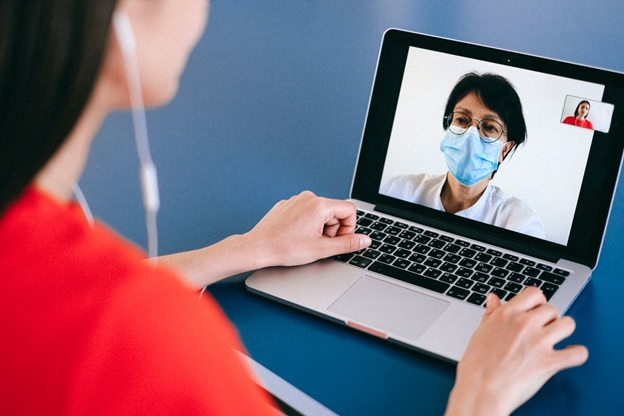Telehealth Has Made Healthcare More Accessible
The continuous advancements in technology have forced the healthcare sector to incorporate digitized services. These digital systems have become necessary to provide the best care to patients and improve health outcomes at all scales. Telehealth platform is one of the services that has gained much recognition over the past few years. Not to forget how the covid-19 outbreak has acted as a catalyst for the emergence of this technology.
Telehealth refers to the use of information and communication technology to make health services more accessible and approachable. Via telehealth, people can have the best, cheap and quick access to quality care. And the good news? People can get in touch with healthcare providers from anywhere around the globe and at any time. The convenience of virtual visits, be it conference calls or chats, provides the patients with a better experience. It has been an evolutionary advancement for people of all ages, from expectant mothers to older adults to people living in remote areas.
Read on below to know how telehealth has proved to be successful for groups, specifically the ones that have financial and geographical barriers to high-quality care:
Table of Contents
1. Care For Women Health
The pregnancy period for every woman should be peaceful and full of excitement. Women usually crave personal attention and emotional care throughout the journey. They yearn for peace of mind and constant moral support. With telehealth, pregnant women do not have to deal with the hassle of in-person visits to clinics. Through the virtual guidance of the health experts, they can monitor blood pressure themselves and the heartbeat of the unborn child. Women also have the advantage of monitoring their conditions during the prenatal period. In case of any complications, patients can get in touch with the healthcare providers.
Notably, the use of telehealth is increasing in the nursing field since nurses are the only healthcare workers who spend relatively more time with patients. Besides, a significant number of nurses are now providing telehealth services after attaining a terminal degree in nursing to provide the best care and psychological assistance.
2. Access To Rural Areas
Long gone are the days when people would have to drive hours for an appointment with the doctors. Today, people living in rural areas can have direct communication with specialists and physicians. Patients can also receive before and after treatment care via telehealth. It further plays a vital role in increasing the rate of health literacy.
If any person remains unable to go for a check-up due to lack of conveyance, in that case, telehealth lends itself as a beneficial solution. The telehealth team can connect patients with the healthcare provider for a meeting. When the session ends, the provider saves the recording file for the health records. Besides, doctors in remote areas can also ask for advice and alternative views from professionals for an efficient and effective medical treatment.
3. Convenient For Older People
Today, the aging population is one of the primary target groups to access telehealth technology services. No doubt, older people are more prone to chronic illnesses such as diabetes, cancer, heart problem, etc. These illnesses require them to receive constant monitoring and treatment by healthcare providers. With telehealth services, the probability of in-person visits and consultations has been minimized significantly. It is because healthcare providers can assess and detect health issues in the earlier stage through telemedicine.
Since many home caregivers are occupied with various tasks, telehealth helps them meet their patients’ needs, resulting in providing improved care. It further reduces the stress of at-home caregivers since most of their queries regarding patient care are resolved through virtual meetings.
4. New Approach to Mental Health Care
Mental health continues to be one of the most prominent health issues all around the world. The lack of mental health treatment can adversely impact an individual and society both. Unfortunately, many factors serve as a hindrance in treating mental issues. These factors include stigma, location, lack of knowledge, or shortage of reliable mental health experts. However, apart from ensuring patients’ safety at home, telehealth has played a vital role in improving people’s mental health, especially during this unprecedented time.
Telehealth eradicates the challenging factors and helps service providers to offer mental health care remotely. Patients with mental illness and providers only require a computer, internet access, and webcam to get treatment. Telehealth has made it easy for patients to receive therapy privately without the fear of being judged by other people. Therefore, this rapidly growing technology acts as a bridge between mentally ill patients and treatment access.
5. Beneficial for Healthcare Providers
The doctors and physicians appointment has become more flexible due to telehealth services. It has reduced the number of appointment cancellations, thus increased revenue. Although each healthcare provider may have expert knowledge, skill set, and training, there might be times when a doctor or physician needs to consult a specialist for further assistance. Health providers can utilize telehealth services to access specialists who can offer real-time consultation through live video chats.
Physicians can even send patients’ x-ray, test reports, medical records, etc., to specialists for further discussion. Virtual consultation can mitigate unnecessary travel costs, waiting time and improve overall patient care quality.
Final Words
Telehealth is relatively a new technology, but the pace at which it is growing seems inexorable. Patients can now contact and consult the physicians to get personalized treatments. Through telehealth, patients can get better consultation from health experts worldwide. The use of telehealth services is beneficial for both patients and doctors as it serves as a contributing factor to improved healthcare services.

